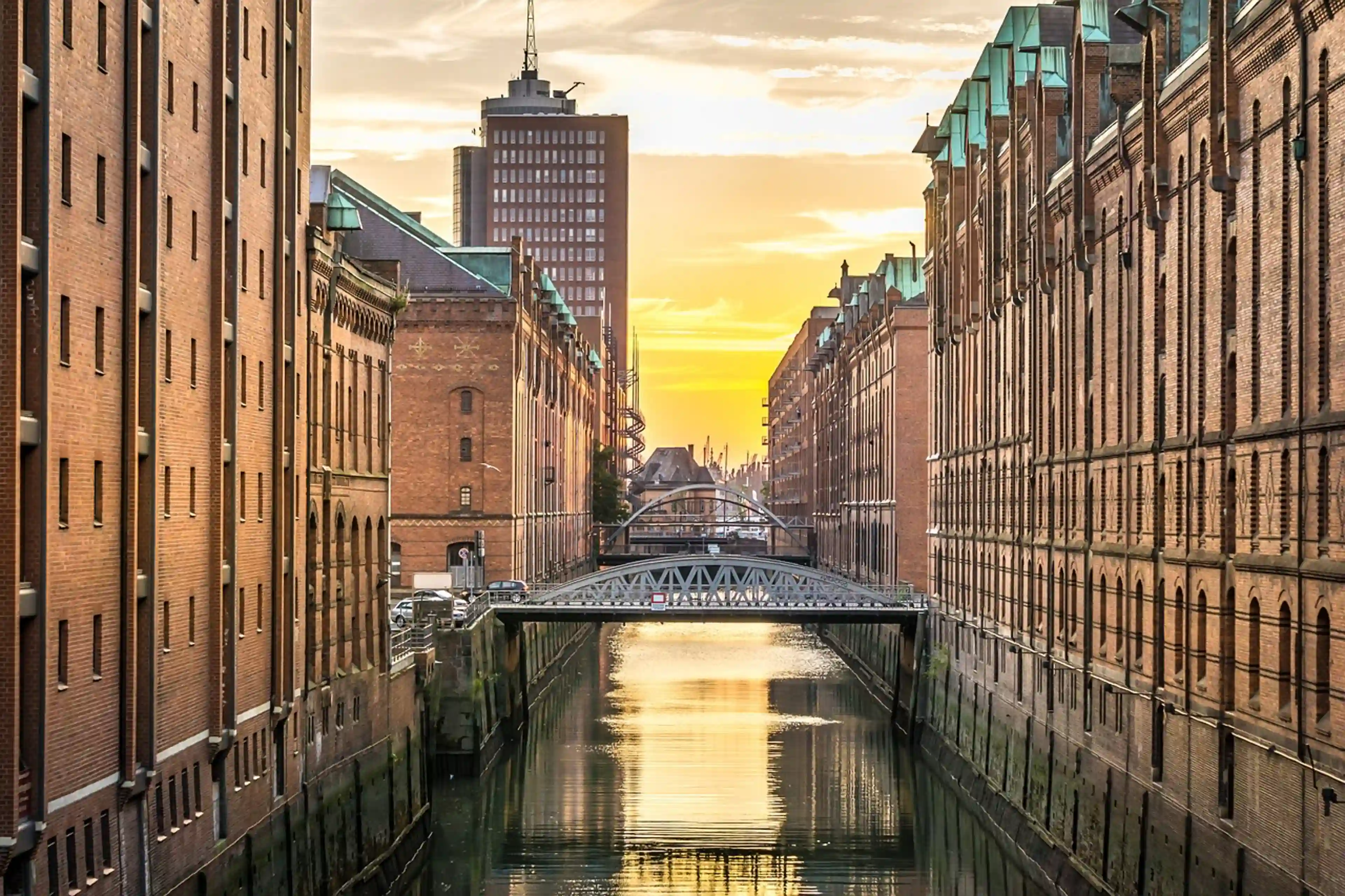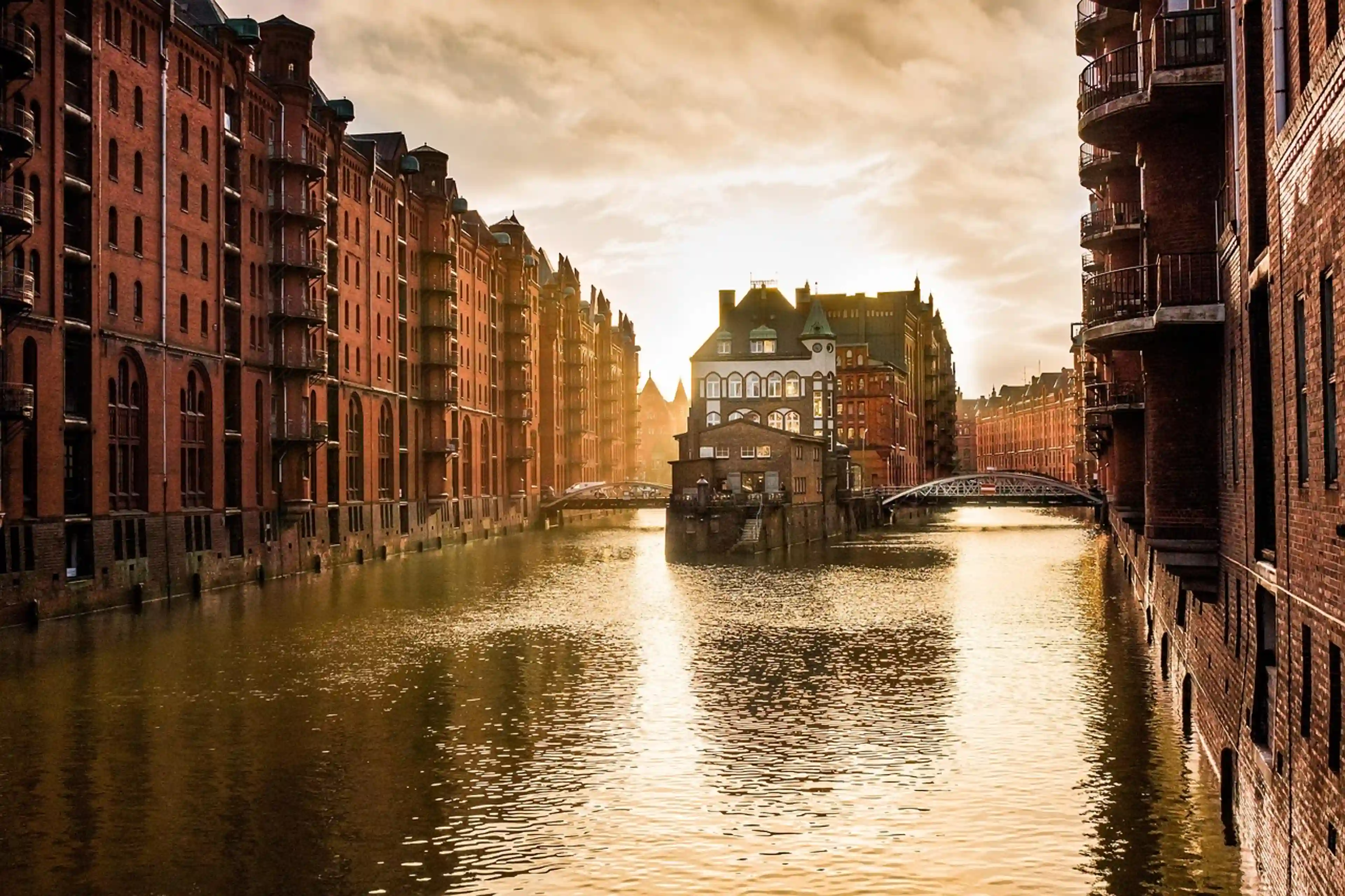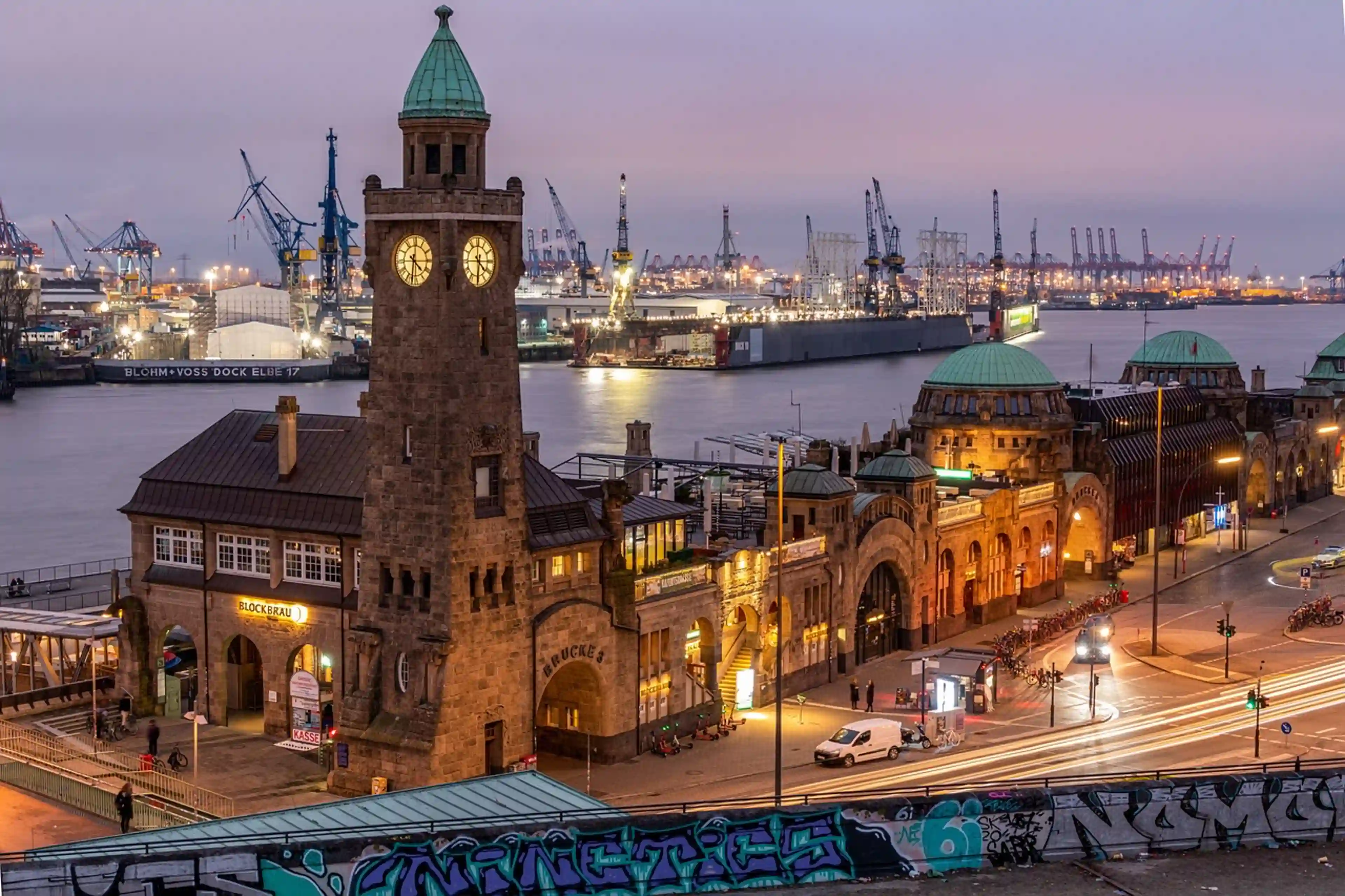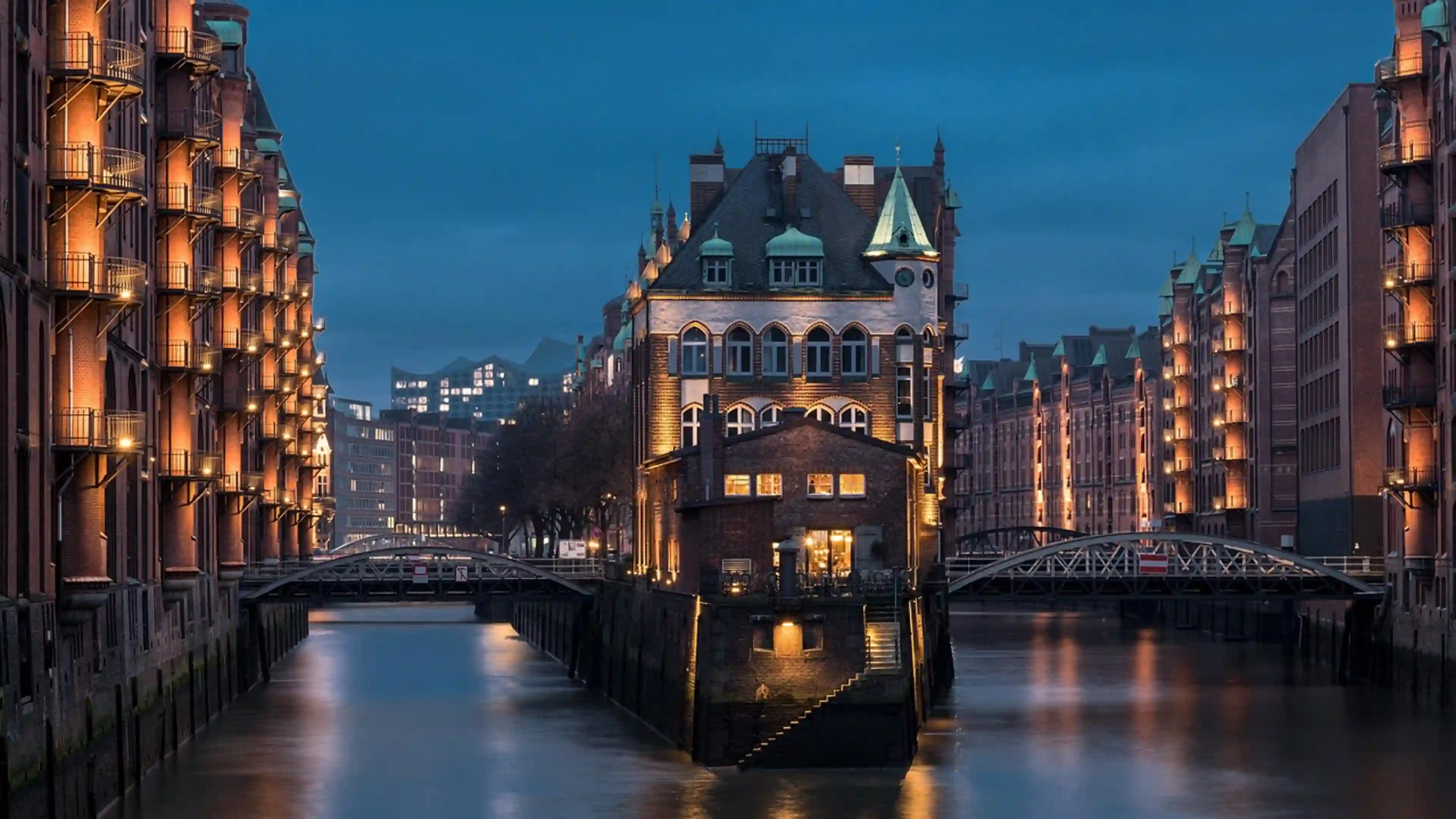Hamburg
General presentation
Top 50
History, culture & traditions
Travel advice
Wikipedia
Viator activities
Tiqets activities
General presentation
Overview
The second largest city in Germany, Hamburg stands out as a dynamic metropolis where the Hanseatic maritime heritage harmoniously interacts with urban modernity. This historic port city fascinates with its rich architectural heritage, the vibrancy of its cultural scene, and the diversity of its neighborhoods. From renowned museums to lively districts like Sankt Pauli and its legendary Reeperbahn, the city offers a range of authentic experiences that appeal to all types of travelers.
Geographical situation
Strategically located in the north of the country, the city thrives at the confluence of three waterways: the Alster, the Bille, and the Elbe. This privileged position, just 100 kilometers from the mouth of the Elbe on the North Sea, explains its role as a major commercial hub since the medieval period and continues to shape its contemporary maritime identity.
Ambiance and character
The Hamburg atmosphere is characterized by a skillful blend of cosmopolitanism and local authenticity. The city vibrates to the rhythm of its contrasts: the nocturnal vibrancy of Sankt Pauli and the Reeperbahn coexists with the tranquility of the promenades along the Alster and the harbor basins. This duality creates a unique ambiance, both festive and contemplative, cultural and laid-back.
Climate
A temperate oceanic climate prevails in the region, offering pleasant weather conditions throughout the year. Temperatures range from 0 to 5°C during the winter months, while the summer months display averages between 18 and 25°C. Precipitation is evenly distributed over the twelve months, with a slight increase in the autumn.
Best season to visit
Each season reveals a different face of the city:
- Spring (March-May): ideal period with the blooming of parks and mild temperatures
- Summer (June-August): long sunny days punctuated by outdoor festivals
- Autumn (September-November): a palette of vibrant colors and rich cultural programming
- Winter (December-February): charm of traditional Christmas markets
Access
The airport, located 8 kilometers from the city center, ensures excellent service with numerous national and international connections. The rail network, centered around the Hauptbahnhof (main train station), efficiently connects the metropolis to major German and European destinations, providing visitors with optimal accessibility.
Internal transport
The urban transport system stands out for its completeness and efficiency:
- Rail network: metro (U-Bahn) and suburban trains (S-Bahn) covering the entire agglomeration
- Water transport: ferries allowing exploration of the city from its waterways
- Bus network: dense network complementing the rail offer
- Sustainable mobility: extensive network of bicycle paths and Stadtrad rental system
Top 50
Wikipedia
Viator activities
Tiqets activities



